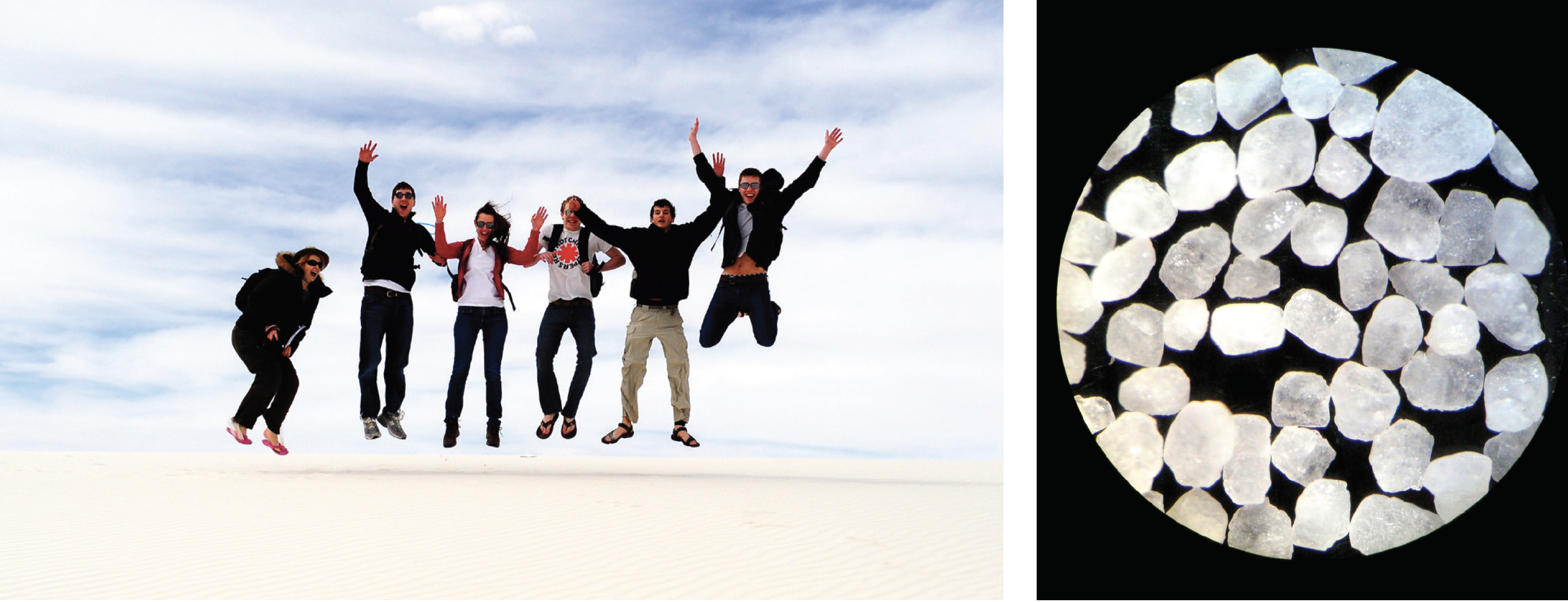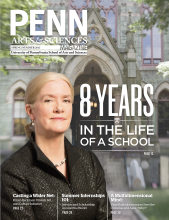Every year, the undergraduate students in Douglas Jerolmack’s Earth Surface Processes class use their spring break to go to a desert instead of a beach: White Sands National Monument in New Mexico. “We go there partly because I want this to be a very memorable experience for them,” says the assistant professor of earth and environmental science. “The dunes are paper white. It’s blinding. It is a wild, alien-looking landscape. But we sit down, roll up our sleeves, take some measurements, and we do basic physics. And they find that even a landscape so alien and unique has to follow the laws of nature, and then we can start to pick apart this landscape into a series of isolated problems and use basic physics to understand what’s going on.”
Jerolmack specializes in sediment, which he defines as “anything that gets moved by water and wind,” the primary fluids that shape the landscape. “I’m interested in how landscapes form by erosion and deposition,” he says. “But along the way there are lots of other problems that come up. And since I’m a curious person, I follow them wherever they lead.”
These annual trips provide a great opportunity to find and follow new leads. One year the group became curious about why they could feel moisture on their bare feet in such a hot, dry place. “We realized that to understand this environment, we had to dive into the groundwater,” says Jerolmack. They found that in parts of the dune field with many plants, the groundwater table was actually lower and the water less salty: With the lower groundwater, there was less evaporation and thus less salt left behind. “The plants actually make the water better for themselves. So that was a surprising result to us, but it turned out that it had been theorized but never been proven.” Jerolmack sent the resulting paper to the scientist who had authored the theory: “He was thrilled.”
This year they focused on smaller scale processes such as how individual sand particles are picked up by the wind—part of Jerolmack’s work to develop “erosion laws” that will help predict environmental effects.
“For a long time these problems of studying erosion and deposition in the environment were thought to be so messy that all we could do was observe,” he says. “The sand particles are different sizes and shapes and the wind is unpredictable. But we ask, can we design very specific field experiments to figure out those unknowns? What we’re hoping to come up with is better erosion laws—to know that if I have a description of the wind, I can predict how much erosion on the landscape is going to result from that wind speed. We now have the technology to make progress toward that.”
“By having an army of curious students every year, we’ve been able to explore every facet of this problem,” Jerolmack says. “The thing for me is to take all the theory that we’re learning in class and put it into action and maybe just discover something brand new, and then write papers together about it. We’re doing fundamental research. We’re publishing papers every year out of the things that we’re doing there.”





